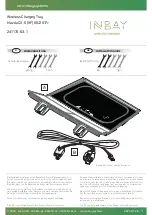
249
Owner Assistance
maintain them. This section
summarizes how the emissions
controls work. Scheduled
maintenance is on page
204
.
Crankcase Emissions
Control System
Your vehicle has a Positive
Crankcase Ventilation System.
This keeps gasses that build up in
the engine’s crankcase from going
into the atmosphere. The Positive
Crankcase Ventilation valve routes
them from the crankcase back to
the intake manifold. They are then
drawn into the engine and burned.
Evaporative Emissions
Control System
As gasoline evaporates in the fuel
tank, an evaporative emission
control canister filled with
charcoal adsorbs the vapor. It is
stored in this canister while the
engine is off. After the engine is
started and warmed up, the vapor
is drawn into the engine and
burned during driving.
Onboard Refueling Vapor
Recovery
The Onboard Refueling Vapor
Recovery (ORVR) system captures
the fuel vapors during refueling.
The vapors are adsorbed in a
canister filled with activated
carbon. While driving, the fuel
vapors are drawn into the engine
and burned off.
Exhaust Emissions Controls
The exhaust emission controls
include four systems: Fuel
Injection, Ignition Timing Control,
Exhaust Gas Recirculation, and
Three-Way Catalytic Converter.
These four systems work together
to control the engine’s combustion
and minimize the amount of HC,
CO, and NOx that comes out the
tailpipe. The exhaust emission
control systems are separate from
the crankcase and evaporative
emission control systems.
Fuel Injection System
The Fuel Injection System uses
sequential multiport fuel injection.
It has three subsystems: Air
Intake, Engine Control, and Fuel
Control. The Engine Control
Module (ECM) uses various
sensors to determine how much
air is going into the engine. It then
controls how much fuel to inject
under all operating conditions.
Ignition Timing Control System
This system constantly adjusts the
ignition timing, reducing the amount
of HC, CO and NOx produced.
















































